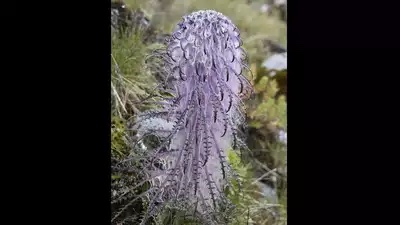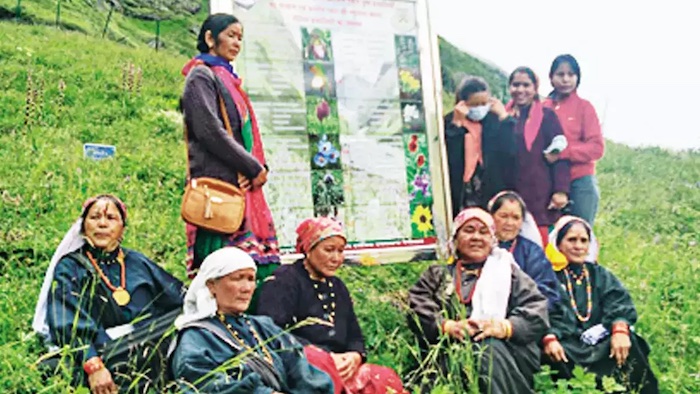Mana, Uttarakhand
This is a collection of articles archived for the excellence of their content. Additional information may please be sent as messages to the Facebook community, Indpaedia.com. All information used will be gratefully acknowledged in your name.
This is a collection of articles archived for the excellence of their content. |
Contents |
Avalanche prone Village
Kalyan Das, March 1, 2025: The Times of India
DEHRADUN: When the avalanche roared down the slopes 500 metres beyond Mana village, killing eight people, it wasn't just lives that were lost — it was also the belief that this place was safe. The Border Roads Organisation (BRO), which has been working on double-laning the critical highway to Mana Pass along the Sino-India border, considered the area relatively secure, given that both Army and Indo-Tibetan Border Police (ITBP) camps sat within 100-200m. That notion was shattered when the search and rescue operation, led by the Army's Ibex brigade, concluded with the recovery of the last missing body on Sunday.
"We thought that the spot— ‘Mana km-0' — was safe because there had been no avalanches here before. The Army and ITBP camps nearby reinforced that sense of security. Nobody expected such a deadly avalanche," said a BRO officer. "This is where the road to Mana Pass begins. Labourer containers had been stationed here for the past three years."
This isn't the first time the mountains in this region have proved unpredictable and deadly. TOI had earlier reported that the area near Mana village is considered one of Uttarakhand's most avalanche-prone zones. In April 2021, a similar disaster struck Chamoli district, near the China border, when a glacier burst triggered an avalanche in Malari-Sumna, claiming 10 lives.
The aftermath of the disaster is already being felt beyond the immediate loss. Another BRO officer, reflecting on the long-term impact of the disaster, said the incident could make it difficult to find workers for the project by the contractor. "People will be scared. The moment they hear where they have to work, they'll hesitate. That could slow down progress, which, in turn, could delay troop induction as well. But despite the challenges, we still aim to complete the 63km stretch from Mana to Mana Pass in two years, widening the road from a single lane to a 6m-wide double lane," he said.
2021, 2025
March 1, 2025: The Times of India
Friday's avalanche hit a stretch of the national highway linking Mana to Ghastoli, a region classified as a high-risk avalanche zone. In fact, this is not the first time that Indian Army and BRO camps were hit by an avalanche in this region. In April 2021, a glacial burst-triggered avalanche struck Malari-Sumna area in Chamoli district, near the India-China border, killing at least 10 people. The victims were BRO workers engaged in construction activities.
According to officials of the State Disaster Management Authority (USDMA), several avalanches were recorded in recent years across the state's higher reaches, including Gaumukh Glacier, Hemkund Sahib, Ghastoli, and the Kalindi-Badrinath track.
According to USDMA, avalanches are common in the Himalayan region with altitudes over 3,500 metres and where the slope is generally more than 30 degrees. North-facing slopes are known to have avalanches in winter, whereas south-facing slopes usually get them during the springtime.
Commenting on the avalanche risk in Uttarakhand, Piyoosh Rautela, former executive director of USDMA, said, "Just like landslide-prone zones, avalanche-prone areas can also be mapped. Once identified, no camps or settlements should be established in these high-risk zones." He further added, "In most avalanche incidents, it is either tourists or workers operating in these regions who usually become the victims since almost all the inhabited villages in these high-altitude regions are migratory, with residents relocating to lower areas during winter."
Traditional devices
High-altitude herbal garden
As in 2021
Shivani Azad, August 22, 2021: The Times of India

From: Shivani Azad, August 22, 2021: The Times of India

From: Shivani Azad, August 22, 2021: The Times of India
DEHRADUN: India's highest-altitude herbal garden with 40 species of Himalayan herbs, including some that are extremely rare and endangered, has come up at a height of 11,000 feet in Mana — the last Indian village near Indo-China border.
The garden spanning three acres was built on van panchayat land by the forest department and inaugurated by Mana village pradhan.
“We have established India's highest-altitude herbal garden with an aim to preserve the rich biodiversity of Himalayas which is under threat from climate change,” Sanjeev Chaturvedi, chief conservator of forests (research), Uttarakhand forest department told TOI.
It took the forest department three years to gather the herbs — many of which are found in remote, inaccessible areas that remain snowbound for several months — and grow them in Mana. The harsh weather in the village posed challenges — it experiences snowfall for four months and severe rainfall for at least three months. “To provide the right conditions for the plants to grow here, we experimented with seeds, rhizomes and various scientific methods,” said Chaturvedi.
The park is divided into four zones. The first zone has plants that generally grow at an altitude of 13,700 feet and above and have high medicinal value. It contains endangered Himalayan alpine species like Van Kakdi (podophyllum hexandrum) which is the only surviving species in its genus.
The second zone houses Saussurea species, including the rare Brahma Kamal (saussurea obvallata) — the state flower of Uttarakhand. The third zone contains Ashtavarga species — a group of eight immune system boosters from the Himalayas. Among them are some extremely rare herbs like Kakoli (lilium polyphyllum), Ksheer Kakoli (lilium polyphyllum) and Rishbhak (malaxis acuminata).
The fourth zone is dedicated to Badrinath shrine, which is located just 5km from Mana, and contains plants that are often offered to the deity. These include Badri Tulsi (origanum vulgare), Badri Ber (hippophae salicifolia) and the sacred Bhojpatra.
Village pradhan Pitambar Singh Moolpa said Mana was proud to have “India’s first such high-altitude herbal garden”. Van panchayat sarpanch Veena Badwal added, “Herbs that grow at such high altitudes are vulnerable to climate change. Therefore, we donated the van panchayat land to this conservation program.”